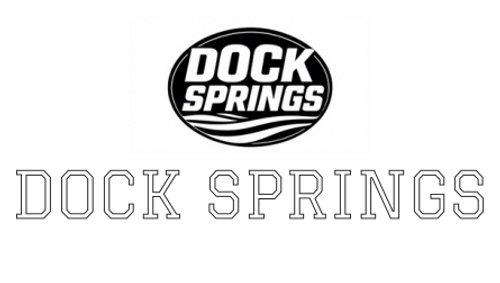ChatGTP's Dock Answer
Here is a link to the ChatGTP page with this conversation.
This is a complex mechanical and structural scenario, so let’s analyze it step-by-step, beginning with the baseline event of a 60 mph wind gust from the south, sustained for 60 seconds. We’ll then adjust various parameters and evaluate effects.
⚙️ BASELINE ANALYSIS – 60 MPH WIND GUST FROM THE SOUTH
🌀 Wind Load on Structure
Using the basic wind load equation:
F=q⋅Cd⋅AF = q \cdot C_d \cdot AF=q⋅Cd⋅A
Where:
-
q=0.00256⋅V2q = 0.00256 \cdot V^2q=0.00256⋅V2 (psf), with V=60V = 60V=60 mph → q=9.22q = 9.22q=9.22 psf
-
CdC_dCd = drag coefficient (~1.2–1.5 for steel frame/dock)
-
AAA = projected area (assumed approx. 10' height × 28' width = 280 ft²)
F=9.22⋅1.3⋅280≈3,357 lbsF = 9.22 \cdot 1.3 \cdot 280 \approx 3,357 \text{ lbs}F=9.22⋅1.3⋅280≈3,357 lbs
This is the lateral wind force pushing north on the entire dock.
🔩 Load on Anchor System (Southwest & Northwest cables)
This entire force translates into tension on the southwest and northwest anchor cables. Since the wind acts directly from the south, most load is transferred to the northwest cable, while the southwest cable bears less direct tension (due to vectoring).
For simplicity, assuming equal load sharing due to diagonal geometry:
Fper cable≈3,3572⋅cos(45∘)≈2,372 lbsF_{\text{per cable}} \approx \frac{3,357}{2 \cdot \cos(45^\circ)} \approx 2,372 \text{ lbs}Fper cable≈2⋅cos(45∘)3,357≈2,372 lbs
This force is absorbed by:
-
The cable
-
The winch
-
The coil spring (dampening shock)
-
The anchor post
🧷 Coil Spring Compression (Initial Response)
Spring rate begins at 800 lb/in, topping at 2200 lb/in over a compression range of 7.5". Using a linear approximation for initial loading:
Compression under 2,372 lbs≈2,372800≈2.96" (in low compression zone)\text{Compression under 2,372 lbs} \approx \frac{2,372}{800} \approx 2.96" \text{ (in low compression zone)}Compression under 2,372 lbs≈8002,372≈2.96" (in low compression zone)
The spring effectively reduces shock load to winch and cable by absorbing about 3 inches of movement.
🪝 Cable, Winch, and Anchor Load
-
Cable tension ≈ 2,372 lbs (well below 14,400 lb break strength)
-
Winch WLL = 3,500 lbs; break limit = 7,000 lbs → safe
-
Anchor post experiences upward and lateral force vector, but remains within soil-concrete limit
⚠️ What if WIND = 65 MPH?
-
q=0.00256⋅652=10.8q = 0.00256 \cdot 65^2 = 10.8q=0.00256⋅652=10.8 psf
-
Wind force: F=10.8⋅1.3⋅280≈3,931F = 10.8 \cdot 1.3 \cdot 280 \approx 3,931F=10.8⋅1.3⋅280≈3,931 lbs
-
Load per cable: ≈3,9312⋅cos(45∘)≈2,780\approx \frac{3,931}{2 \cdot \cos(45^\circ)} \approx 2,780≈2⋅cos(45∘)3,931≈2,780 lbs
-
Spring compression: 2,780800≈3.48"\frac{2,780}{800} \approx 3.48"8002,780≈3.48"
Still within capacity of all components, but spring starts to move into progressive rate zone.
⚠️ What if WIND = 70 MPH?
-
q=12.5q = 12.5q=12.5 psf
-
Wind force: F≈12.5⋅1.3⋅280=4,550F \approx 12.5 \cdot 1.3 \cdot 280 = 4,550F≈12.5⋅1.3⋅280=4,550 lbs
-
Load per cable: ≈3,217\approx 3,217≈3,217 lbs
-
Spring compression: ≈4.0"\approx 4.0"≈4.0"
Now approaching winch WLL and nearing spring midpoint, causing: -
Higher restoring forces from springs
-
Potential for fatigue stress on anchor/winch
-
Dynamic instability if wind gusts or waves introduce vibration
🔀 EFFECT OF SYSTEM CHANGES
🧵 What if 5/16" Cable Used?
-
Breaking strength drops from 14,400 lbs to ~9,800 lbs
-
Safety margin significantly reduced
-
High winds (70 mph) would bring cable tension to ~33% of break limit (vs. 22% with 3/8")
Not recommended — less shock resistance, lower fatigue life.
🔧 What if 100 lb Preload on Springs?
-
Pre-compresses spring by 100800=0.125"\frac{100}{800} = 0.125"800100=0.125"
-
Slightly increases responsiveness to light wave motion
-
Negligible structural impact
-
May help stabilize dock position
🪢 What if 2 Feet of Slack in Each Cable?
-
Dock would shift 24" before cable tension engages
-
Spring not active until cable taut — no dampening during slack travel
-
Sudden shock load when cable snaps taut:
-
Equivalent to a car hitting a rigid wall → high instantaneous load
-
Could double effective tension due to impulse (up to 6,000+ lbs) — dangerous
-
-
Spring can't do its job → increased winch/cable/anchor stress
Conclusion: Slack is detrimental. Keep cables taut with springs engaged.
🔁 What if Cross-Cables Added (NW to South Anchor & SW to North Anchor)?
-
Converts system into X-cross-braced geometry
-
Load is now shared diagonally and symmetrically
-
Wind load vector is distributed across 4 cables
-
Reduces tension on each cable from ~3,200 lbs → ~1,600 lbs
-
Doubles effective resistance to yaw/rotation
-
Adds redundancy – if one cable fails, opposing corner still supported
Strongly recommended for better load distribution and resilience.
🧨 What if Spring Dampeners Removed?
-
Entire wind load applied directly to cable/winch/anchor
-
With no give, shock load not absorbed
-
Instantaneous force spikes from wind or wave motion could double nominal loads
-
Fatigue, loosening of winch locks, or even anchor bending more likely
Result: High risk of catastrophic failure in stormy or gusty conditions.

Those last two words say it all... Springs essential.
